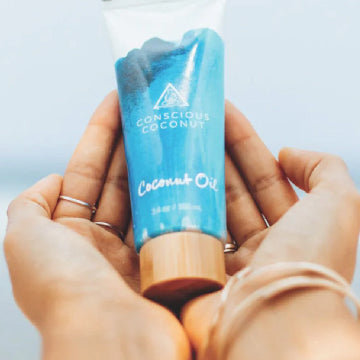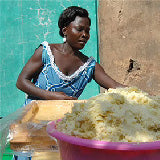Mica, The Sparkly Mineral with a Grim Rap Sheet

Beauty consumers have been pushing the cosmetics industry to function in more and more transparent waters, evident with the influx of “cruelty-free” “vegan” and “clean” ingredient labels showing up on virtually every product on a store shelf or shopping cart. While these transparent business practices are certainly a step in the right direction, the truth about the supply chain that creates our beauty products is still incredibly murky.
This is especially true when it comes to the natural glittery mineral of mica, which is responsible for the sparkle in many big brand blush, bronzer, eyeshadow and lipstick collections. The manner in which this natural mineral is sourced is surprisingly fraught with child labor.

gif @beautycounter
What Is Mica?
According to the Minerals Education Coalition, mica comes from an igneous rock and is part of the silicate minerals’ group. Silicate minerals can be produced as either sheets or flakes and are sourced via mining. Since mica is lightweight, soft and flexible, it’s relatively easy to use. For years, mica has been used in insulation, asphalt, and electronic equipment. It has also found its way into the multi-billion dollar beauty industry thanks to its malleability and highly reflective properties. Mica shows up in matte skincare products too, offering pigmentation in foundation or increasing SPF particles in sunscreen. Once ground up into a fine powder, mica’s abilities to boost beauty products efficacy and appearance are infinite.
Hard to believe that this seemingly innocent and bright mineral carries with it such a dark secret. With so many pro activist labels being slapped on our products, it’s easy to be misled into thinking our go-to beauty staples are also ethically sourced. Mica is regulated and approved by the FDA in terms of safety, but the problem lies in its indigenous roots. Since most mica mines are located in India where the poverty levels are staggering, mica mining is a common, albeit highly dangerous and unethical form of employment.
 photo @newslaundry
photo @newslaundry
Where Does it Come From?
Mica is found in more than 35 countries, however, almost half of mined mica is sourced from India because of the lower labor costs. Flaky mica, which is used in cosmetics, typically comes from Indian mines in Jharkhand and Bihar, both states with incredibly poor communities. It’s worth noting that while the majority of these mines are illegal and unregulated, it has little bearing. The demand for mica is so high that families are forced to risk their health and lives under harsh conditions all to make ends meet. Since small hands and bodies are an advantage to access small mine shafts, the most valuable family members end up being children.
According to The Age, children earn five Indian rupee (equivalent to 8 cents) per kilogram, even though the mines are earning a greater profit depending on the shape and quality. If the child labor and bare minimum wage isn’t bad enough, mica can harm the long term health of those mining it. Even though mica is safe to apply to skin and approved by the FDA, it can cause lung scarring to those mining the mineral through inhaling the dust. Miners are prone to inhaling large quantities of the mineral, thus increasing harmful long term risks like coughing, fatigue, and shortness of breath. Collapsing mines in India are another major concern which results in dozens of deaths a month.
 photo @mongabay
photo @mongabay
What is the Alternative?
Thanks to consumers voicing their opinions, progress is being made and ethically mined mica is a real thing. Several ethical cosmetic brands have taken it upon themselves in recent years to remove and/or replace the mineral with synthetic or “ethical” mica such as Lush, Ather Beauty, Haut Cosmetics, Elate Beauty, Beautycounter and Omiana. Even some of the big corporations are finally bringing awareness to this issue and legally source their mica, including Procter & Gamble (P&G), Coty Inc., and L’Oreal Paris.
However there is still a long way to go. Educate yourself on where your products are coming from, email brands if you can’t find the answers you’re looking for and share your empowering knowledge with friends and family. Look for beauty brands that source fair trade ingredients, follow fair trade practices and are Fair Trade Certified. Another main stand out is a brand associated with the Responsible Mica Initiative, an organization committed to a fair, responsible and sustainable mica supply chain that prohibits the use of child labor and poor working conditions. These ethical suppliers offer access to educational resources for children, health care and alternatives toward economic dependency for mica-dependent communities.
We as consumers have the power, but we won’t be heard if we don’t speak up or show our values with our wallet. A small dose of your help can better the world around you.
Written by Diana Flores














